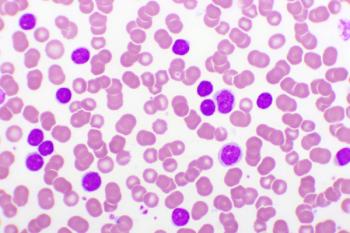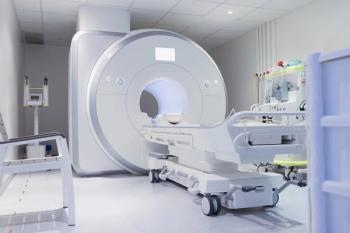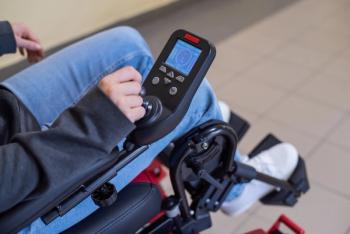
Delivery of onasemnogene abeparvovec into the intrathecal space was safe and effective for children with spinal muscular atrophy (SMA) aged 2 to 17 years, who had previously been shut out of receiving gene therapy.

Delivery of onasemnogene abeparvovec into the intrathecal space was safe and effective for children with spinal muscular atrophy (SMA) aged 2 to 17 years, who had previously been shut out of receiving gene therapy.

Treatment guidelines in polycythemia vera currently recommend maintaining hematocrit below 45%, with a higher threshold for men vs women.

Celiac disease can lead to both disease-related and diet-induced vitamin deficiencies, making it crucial for patients to receive tailored nutritional management to ensure adequate nutritional intake.

Public health official warns the expanding measles outbreak could last a year.

Tenacious efforts at every level, from the individual clinician to the hospital to the state to Congress, will be needed to make sure patients can access life-saving gene therapies for neuromuscular diseases.

Annie Antar, MD, PhD, discusses how patients with HIV can have different and longer-lasting symptoms of COVID-19.

Posters presented at the 2025 Muscular Dystrophy Association Clinical & Scientific Conference highlight the complex care needs and physical activity barriers for individuals with myotonic dystrophy.

Researchers also highlighted the significance of TTNT-D as a real-world measure of treatment efficacy, noting it provides insight into both clinical and patient-centered outcomes.

Biologics targeting interleukin (IL)-12, IL-23, or IL-17 reduced serious infections, while tofacitinib increased infection risk, according to one study.

Data from the EMBARK trial of delandistrogene moxeparvovec in patients with Duchenne muscular dystrophy (DMD) show that benefits in functional outcomes, gene expression, and muscle imaging persist 2 years after receiving the gene therapy.

Tania Gendron, PhD, speaks to the present challenges for translating biomarker discoveries to clinical practice and offers insights to how these can be overcome.

Michelle Hessen, OD, discusses how cyclosporine ophthalmic solution 0.09% is safe to use in patients with dry eye, as well as where future research should turn.

Pulmonary arterial hypertension (PAH) can be a challenging complication to manage during pregnancy; women with PAH who are pregnant are considered a high-risk population, and they face higher rates of maternal and fetal complications.

Recent cuts to federal grants are set to have a widespread impact across numerous scientific and medical studies.

Adults with irritable bowel syndrome (IBS) who smoke may face heightened challenges in quitting due to severe IBS symptoms and anxiety sensitivity, which increase perceived barriers and reinforce the belief that smoking helps relieve negative emotions.

Posters presented at the 2025 Muscular Dystrophy Association (MDA) Clinical & Scientific Conference show that therapeutic advances in treating spinal muscular atrophy (SMA) are not uniformly making it into the hands of patients who could benefit.

Chronic inflammatory demyelinating polyneuropathy (CIDP) can have a substantial impact on patients everyday life and, consequently, put added stress on health care systems.

Annie Antar, MD, PhD, discusses the association between the symptoms of long COVID and HIV status.

The rapid development of gene therapy options for treating neuromuscular diseases has created new therapeutic options but also logistical hurdles and a need for complex discussions between clinicians and families.

Elizabeth Jones, MD, FAAD, Thomas Jefferson University Hospitals, highlights the continued relevance of older, generic dermatologic therapies despite the availability of newer, targeted treatments.

Adeno-associated virus (AAV)–mediated gene therapy was one of the focal points of this year's Muscular Dystrophy Association conference. Here, Barry Byrne, MD, PhD, University of Florida, speaks to the novel development of AAV gene therapy and its mechanism of action.

The Conference on Retroviruses and Opportunistic Infections 2025 (CROI) featured multiple sessions that focused on breaking research and treatments.

Multiparametric quantitative MRI could potentially help differentiate between Duchenne muscular dystrophy and Becker muscular dystrophy early and improve the management of these conditions.

Giulio Cossu, MD, speaks to the lingering safety concerns related to ex vivo gene therapy in Duchenne muscular dystrophy (DMD) as long-term data are yet to be established.

The final analysis showed similar overall survival, progression-free survival, and objective response rates, with no new safety signals identified compared with the primary analysis.

A new analysis out of England shows a considerable level of uncertainty among adults who think they could have long COVID, as well that levels of the chronic condition are disproportionately higher among certain socially disadvantaged groups.

Learning from examples like congenital heart disease and cystic fibrosis can help health systems and clinicians prepare to care for an influx of patients with neuromuscular diseases as they reach adulthood thanks to transformative therapy advances.

Robert Califf, MD, former commissioner of the FDA, delivered a keynote address at the 2025 Muscular Dystrophy Association Clinical & Scientific Conference that highlighted the enormous opportunities for progress in neuromuscular disease care amid a changing policy environment.

The final data analysis confirmed that mirvetuximab soravtansine-gynx (Elahere; AbbVie) significantly improves progression-free survival, overall survival, and objective response in patients with folate receptor alpha-positive (FRα+) platinum-resistant ovarian cancer.

Cemacabtagene ansegedleucel, an allogeneic chimeric antigen receptor (CAR) T-cell therapy, is being investigated in relapsed/refractory large B-cell lymphoma.

259 Prospect Plains Rd, Bldg H
Cranbury, NJ 08512
© 2025 MJH Life Sciences®
All rights reserved.
